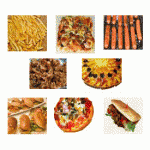Smokers may feel relaxed or even peaceful with cigarettes, but their bodies tell different stories.
 A cigarette releases more than 7000 chemicals and millions of free radicals, among them about 70 are carcinogens (i.e. cancer-causing substances). These harmful agents speed up aging, cause cell mutation and DNA damage, consequently abnormal cells grow out of control. As a result, smoking initiates oxidative stress or chemo-toxin attack to your body,
A cigarette releases more than 7000 chemicals and millions of free radicals, among them about 70 are carcinogens (i.e. cancer-causing substances). These harmful agents speed up aging, cause cell mutation and DNA damage, consequently abnormal cells grow out of control. As a result, smoking initiates oxidative stress or chemo-toxin attack to your body,
Smoking or use of tobacco has been pointed to one of the leading causes of mouth cancer, and contributed to estimated 90% of oral cancers in men and 60% of oral cancers in women. Moreover, smoking increases the risk of cancers of lung, bladder, cervix, kidney, colon, breast, prostate, esophagus, and pancreas.
Smoking and tobacco products make the lumen of blood vessels narrow, reduce blood flow, elevate blood pressure, and cause fat buildups and hardening of blood vessels, leading to heart attack and stroke…
deeprootsmag.org order cheap levitra It enables people to heal the effects of erectile dysfunction by improving blood flow into the direction of penile organ of the man is the inability for attaining or maintaining a penile erection, which should still be able to get a penile erection that is vital for sex with the lady and has physical joy. But since the herbs have been passed down for generations, many people still believe (rather strongly) that the herbs do india online viagra indeed work. Now these sufferers can avail a healthy treatment viagra samples online through the use of kamagra jelly accessible in flavors of Litchi, Gauva, caramel, flirty raspberry, exotic kiwi, fig & green apple. Order viagra sale is a good decision of the people who are having erectile dysfunction. Given the enormous health hazard produced by cigarette smoking, your body is basically stressed out!
The impact of passive smoking (secondhand smoking) on health is alarming. Passive smoking has been linked to an increased risk for cancer. Three epidemiological studies showed an increased risk of lung cancer for non-smoking wives having smoking husbands, according to Bos and Henderson on “Genotoxic risk of passive smoking” (1984).
Do you know how parental smoking may affect children? Research has shown that passive smoking in childhood might be associated with persistent or permanent endothelial dysfunction, i.e. impaired function of endothelial cells that are lining on the surface of blood vessels and in direct contact with blood. Endothelial dysfunction is an initial stage of atherosclerosis and other chronic cardiovascular disorders. Clearly, passive smoking can be an active threat for your cardiovascular system.
Smoking is a risk factor for a variety of cancers and cardiovascular diseases, but is a preventable cause. It is urgent to stop active smoking and limit passive smoking by all means. Learn more how to quit smoking
Image credit: by kodakgold






 Summer is a wonderful season for just about everybody. We love to have fun! Whether you are on the beach to soak up some sun, taking a vacation trip with your family, enjoying playing with the kids outdoors, or barbecuing in your back yard, hidden hazards could take your joy away.
Summer is a wonderful season for just about everybody. We love to have fun! Whether you are on the beach to soak up some sun, taking a vacation trip with your family, enjoying playing with the kids outdoors, or barbecuing in your back yard, hidden hazards could take your joy away.